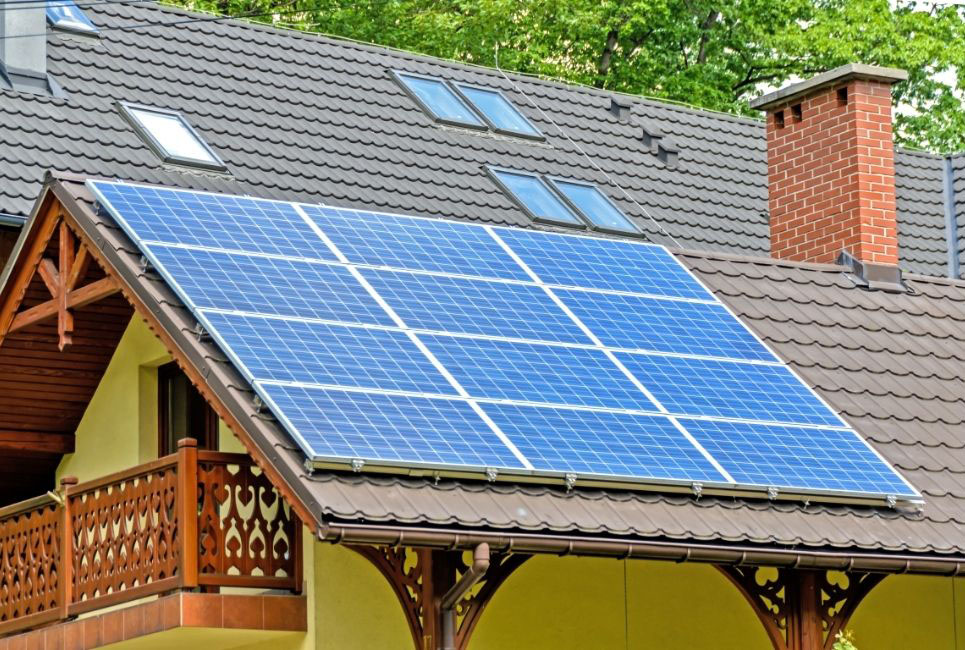Green Homes Grant Scheme

The Green Homes Grant scheme is closing.
Your customer will need to apply for a voucher by 5pm on 31 March 2021.
The Green Homes Grant has been announced and is planned to go live at the end of September.
The new scheme will see the government fund up to two-thirds of the cost of home improvements of over 600,000 homes, supporting over 100,000 jobs in green construction.
Tradespeople for energy efficiency measures must be TrustMark registered and will need to be to certified to PAS 2030:2017; however installers can also be registered to PAS 2030:2019.
To install low carbon heat measures, tradespeople must be TrustMark registered and certified through the Microgeneration Certification Scheme for the relevant heating technology.
The government has set out further details of the range of measures included and how consumers in England will be able to claim the new vouchers, which are worth up to £5,000 for homeowners. Households on low income can receive vouchers covering 100% of the cost of the improvements, up to a maximum of £10,000.
Later this month, homeowners across England will be able to access advice and support on improving the energy efficiency of their homes from the Simple Energy Advice (SEA) service. SEA will suggest appropriate home improvements that homeowners may be able to apply for support in funding.
Households will be offered a list of approved TrustMark, PAS 2030 and MCS registered tradespeople in their local area to carry out the work. Once the works are agreed, vouchers will start to be issued from the end of September so work can commence.
Example Scenario
If a homeowner of a semi-detached or end-terrace installed cavity wall and floor insulation, costing around £4,000, the homeowner would pay just £1,320 with the government paying £2,680. (Rounded up at 67%)
£4000 – 66.666% (two-thirds) = £2666.64 Government paying.
Lower Income
For those on low income who are owner occupiers and in receipt of income-based or disability benefits, a 100% subsidy will be available up to a maximum government contribution of £10,000. As part of this package, £500 million will be earmarked specifically to support low-income, fuel poor households, including those living in rented accommodation.
TrustMark
Since being established in 2005 TrustMark has been instrumental in enhancing levels of consumer protection in a range of industry sectors. TrustMark serves to enhance consumer protection and choice, providing peace of mind and confidence. TrustMark registered businesses have been thoroughly vetted to meet required standards. TrustMark offers a range of remedies to give further protection to consumers.
Available Measures
Measures available are split into “primary” and “secondary” categories.
Households will need to install at least one of the primary measures below to qualify for Funding.
Primary Measures
Insulation Measures
- Solid Wall Insulation
- Cavity Wall Insulation
- Under-Floor Insulation
- Loft Insulation
- Flat Roof Insulation
- Room in Roof Insulation
- Park Home Insulation
Low carbon heat Measures
- Air Source Heat Pump
- Ground Source Heat Pump
- Solar Thermal
- Biomass Boilers
“Top ups” are allowed (e.g. additional loft insulation up to the recommended level, solid wall insulation for other walls where a wall has been previously insulated), but replacements are not included.
So long as there is at least one primary measure in the package of works, households will also be able to install secondary measures. Secondary measures can only be subsidised up to the amount of subsidy provided for primary measures. (e.g. if a household receives £1,000 for primary measures, they can only receive a maximum of £1,000 towards secondary measures).
Secondary Measures
- Draught Proofing
- Windows and Doors: Double/Triple Glazing (Where Replacing Single Glazing), Secondary Glazing (In Addition to Single Glazing), Upgrading to Energy Efficient Doors (Where Replacing Doors Installed Prior To 2002).
- Heating Controls and Insulation: Appliance Thermostats, Hot Water Tank Thermostats, Hot Water Tank Insulation, Smart Heating Controls, Zone Controls, Delayed Start Thermostat, Thermostatic Radiator Valves
For low-carbon heating to be installed, households will need to have adequate insulation (e.g. wall and loft, where applicable). These can be installed as part of a package – they do not have to already be in situ.
Eligibility
For the general scheme, the following properties are eligible:
- All owner-occupied homes (including long-leaseholders, shared ownership)
- Landlords of private rented sector domestic properties
- Landlords of social sector domestic properties (including LA owned homes)
- Park home owners (for residential sites including Gypsy and Traveller sites)
- Landlords cannot apply for the low-income portion of the scheme
- New-build properties that have not previously been occupied are not eligible for the scheme.
- You cannot apply for the scheme if you have already received a grant from your local authority as part of the Local Authority Delivery Scheme.
Items not covered by the voucher
There are certain items that are not covered by the voucher, including:
- building a new extension or conversion to your home
- insulating a conservatory with no fixed heating
- installing a new fossil fuel boiler (such as gas, oil or LPG boilers)
Low-Income Scheme
For the low-income scheme, only owner-occupied properties and park homes are eligible. Households receiving income-based or disability benefits would be eligible for a fully funded package of measures.
Eligibility for low-income scheme
You qualify for the Green Home Grants low-income scheme if you receive at least one of the following benefits:
- Income based Jobseekers allowance (JSA)
- Income based Employment & Support Allowance (ESA)
- Income Support (IS)
- Pension Guarantee Credit
- Working Tax Credit (WTC)
- Child Tax Credits (CTC)
- Universal Credit (UC)
- Disability Living Allowance (DLA)
- Personal Independence Payment (PIP)
- Attendance Allowance
- Carer’s Allowance
- Severe Disablement Allowance
- Industrial Injuries Disablement Benefit
- Contribution based Jobseekers allowance (JSA)
- Contribution based Employment & Support Allowance (ESA)
- Housing benefit
How to apply
- Use the Simple Energy Advice (SEA) website to check what energy efficiency or low carbon heat improvements can be made to your home.
- Use the SEA website to find accredited tradespeople or businesses in your area that are able to undertake the work and obtain quotes from them. You should get at least 3 quotes to make sure you are getting the best value for money.
- Apply for the voucher from the end of September 2020.
You should only enter into a commitment to carry out work once you have had confirmation that your voucher application has been accepted.
You must make sure the work is scheduled to be completed, and the voucher redeemed subject to its terms and conditions, by 31 March 2021.

